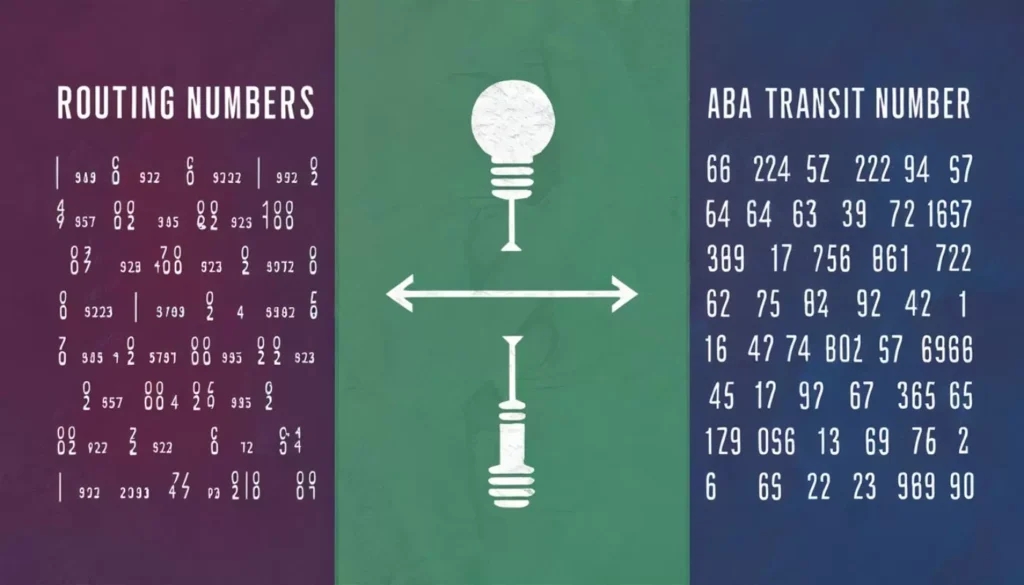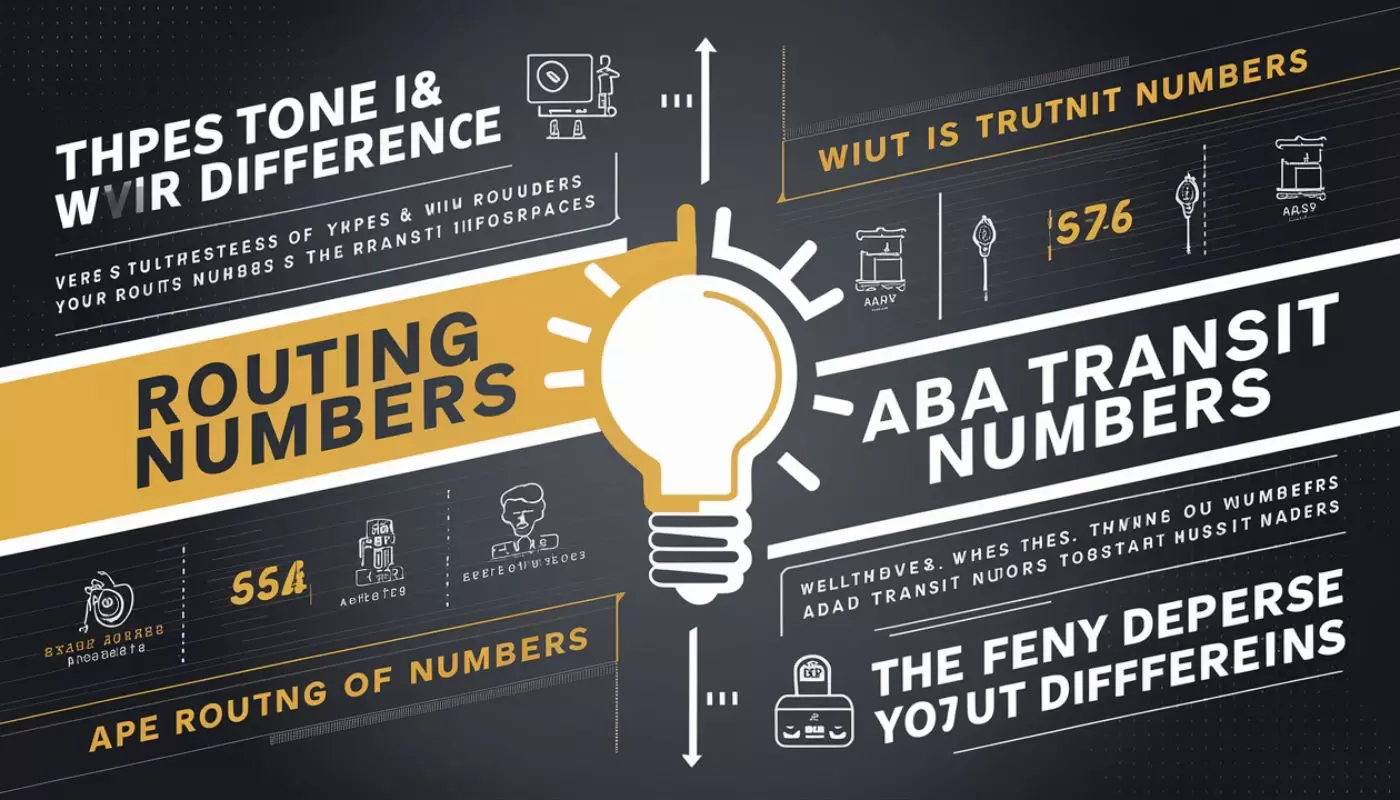In the world of banking and finance, few things are as ubiquitous yet misunderstood as routing numbers and ABA transit numbers. These seemingly cryptic strings of digits play a crucial role in our daily financial lives, from setting up direct deposits to making wire transfers. But what exactly are they, and is there really a difference between the two? Let’s dive deep into the world of banking identification numbers and unravel this mystery once and for all.
What Are Routing Numbers?
Routing numbers, also known as ABA routing transit numbers or RTNs, are nine-digit codes that serve as a unique identifier for financial institutions in the United States. Think of them as the GPS coordinates of your bank in the vast landscape of the American banking system.
These numbers were first introduced by the American Bankers Association (ABA) in 1910. Back then, the goal was simple: to create a standardized way to identify banks and streamline the process of clearing checks. Fast forward to today, and routing numbers have become an integral part of nearly every financial transaction we make.
The Anatomy of a Routing Number
Let’s break down the structure of these crucial identification numbers:
- First four digits: Federal Reserve routing symbol
- Next four digits: ABA institution identifier
- Last digit: Check digit for verification
Here’s a quick table to illustrate:
| Digits | Meaning |
| 1-4 | Federal Reserve routing symbol |
| 5-8 | ABA institution identifier |
| 9 | Check digit |
Read This: BROOK TAUBE MEDLEY: THE VISIONARY CO-CEO TRANSFORMING FINANCIAL MANAGEMENT
Understanding ABA Transit Numbers
Now, here’s where things get interesting. You might have heard the term “ABA transit number” used interchangeably with “routing number.” Is there a difference? In short: not really.
The term “ABA transit number” is essentially an older name for what we now commonly call a routing number. It harkens back to the days when these numbers were primarily used for check clearing. Banks would “transit” checks from one institution to another, hence the name.
In the banking world, evolution is constant, but some terms stick around longer than others. – Anonymous banking expert
Today, while the term “ABA transit number” is still used in some circles, it refers to the same nine-digit code we know as a routing number. The persistence of this term is a testament to the banking industry’s rich history and the slow-changing nature of financial terminology.
Routing Numbers vs ABA Transit Numbers: Are They Really Different?

Let’s cut to the chase: routing numbers and ABA transit numbers are the same thing. The difference lies not in their function or structure, but in the terminology used to describe them. This dual naming can often lead to confusion, especially for those new to the intricacies of banking.
So why do both terms still exist? It’s a classic case of old habits dying hard. The banking industry, with its roots deep in tradition, often holds onto legacy terms even as new ones come into use. For the average consumer, this means you might encounter both terms in different contexts, but you can rest assured they’re referring to the same thing.
Impact on Your Banking Experience
The good news? This terminological quirk shouldn’t affect your day-to-day banking. Whether you’re looking at your checkbook or setting up an online payment, you’re dealing with the same number, regardless of what it’s called.
However, understanding that these terms are interchangeable can save you some headaches, especially when dealing with older banking forms or talking to customer service representatives who might use the term “ABA transit number.”
Common Uses for Routing Numbers
Routing numbers are the unsung heroes of modern banking, facilitating a wide range of financial transactions. Here are some of the most common uses:
- Direct Deposits: When you start a new job and set up direct deposit, you’ll need to provide your routing number along with your account number.
- Wire Transfers: For domestic and international wire transfers, routing numbers help ensure your money reaches its intended destination.
- Online Bill Payments: Many online billing systems require your routing number to set up automatic payments.
- Tax Returns: When you’re expecting a tax refund and want it deposited directly into your account, you’ll need to provide your routing number on your tax return.
- ACH Transactions: These automated clearing house transactions, which include things like automatic bill payments and payroll deposits, rely heavily on routing numbers.
Case Study: The Importance of Accurate Routing Numbers
In 2018, a small business owner in California nearly lost $20,000 due to a single digit error in a routing number. The funds were mistakenly sent to a bank in New York instead of the intended recipient in Los Angeles. This case highlights the critical importance of accuracy when dealing with routing numbers in financial transactions.
Read Also This: INVEST FEST 2023: A GROUNDBREAKING CELEBRATION OF BLACK WEALTH CREATION
Potential Issues and How to Avoid Them

While routing numbers are designed to make banking easier, they can sometimes be a source of confusion or even security concerns. Here are some potential issues to watch out for:
- Using the Wrong Routing Number: Large banks often have multiple routing numbers, usually organized by state or region. Using the wrong one can lead to delayed or failed transactions.
- Security Concerns: Routing numbers aren’t secret (they’re printed on checks, after all), but they can be used as part of identity theft schemes when combined with other personal information.
- Outdated Information: Bank mergers or restructuring can sometimes lead to changes in routing numbers, which can cause issues if you’re using outdated information.
To avoid these pitfalls, follow these best practices:
- Always double-check your routing number, especially when setting up new payments or accounts.
- Keep your checks and banking information secure, even though the routing number itself isn’t confidential.
- Regularly verify your routing number with your bank, especially if you’ve been with them for a long time or if they’ve undergone any major changes.
The Future of Routing Numbers
As we move further into the digital age, you might wonder about the future of routing numbers. Will they become obsolete in a world of cryptocurrency and blockchain?
For the foreseeable future, routing numbers are here to stay. They’re deeply ingrained in the U.S. banking system and continue to serve a vital function in secure financial transactions. However, the way we interact with them might change.
Digital Banking Trends
With the rise of mobile banking apps and digital wallets, many consumers rarely need to manually enter their routing numbers anymore. These apps often store and automatically fill in this information, making transactions even more seamless.
Potential Changes in the System
While the basic structure of routing numbers is likely to remain the same, we might see changes in how they’re used or integrated into new financial technologies. For instance, some fintech companies are exploring ways to use routing numbers in conjunction with blockchain technology to create more efficient and secure transaction systems.
Conclusion
In the grand scheme of banking, the difference between routing numbers and ABA transit numbers is more about semantics than substance. They’re two names for the same crucial piece of banking infrastructure that keeps our financial system running smoothly.
Understanding these numbers – whatever you choose to call them – is key to navigating the modern financial landscape. From setting up your paycheck’s direct deposit to making sure your tax refund lands in the right account, routing numbers play a vital role in your financial life.
So the next time you’re staring at that string of nine digits at the bottom of your check, remember: you’re looking at a piece of banking history that continues to shape our financial present and future. And whether you call it a routing number or an ABA transit number, its importance in keeping your money moving remains the same.
FAQs
Can routing numbers change?
Yes, routing numbers can change, usually due to bank mergers or internal restructuring. Always verify your routing number with your bank if you’re unsure.
Do credit unions use routing numbers?
Yes, credit unions use routing numbers just like banks do. These numbers function the same way for credit unions as they do for traditional banks.
What’s the difference between a routing number and an account number?
A routing number identifies the bank, while an account number identifies your specific account within that bank. You need both for most transactions.
Are routing numbers the same for all bank branches?
Not always. Large banks often have different routing numbers for different regions or states. Always check with your specific branch.
How do I find my routing number without a check?
You can usually find your routing number by logging into your online banking portal, calling your bank’s customer service, or checking your bank’s website.












